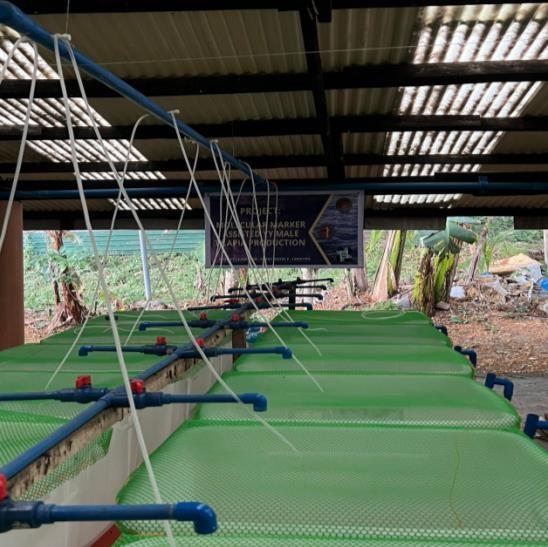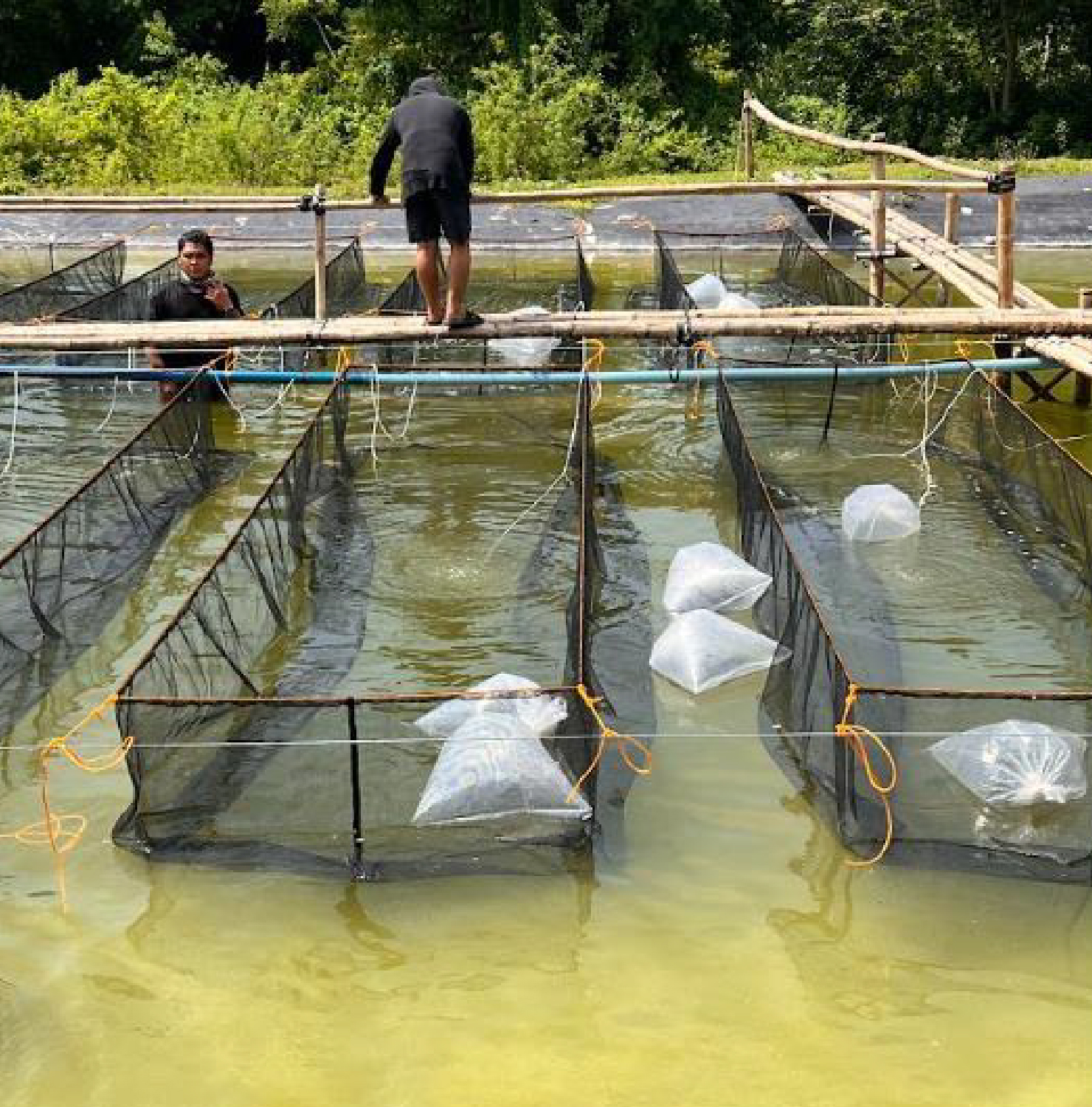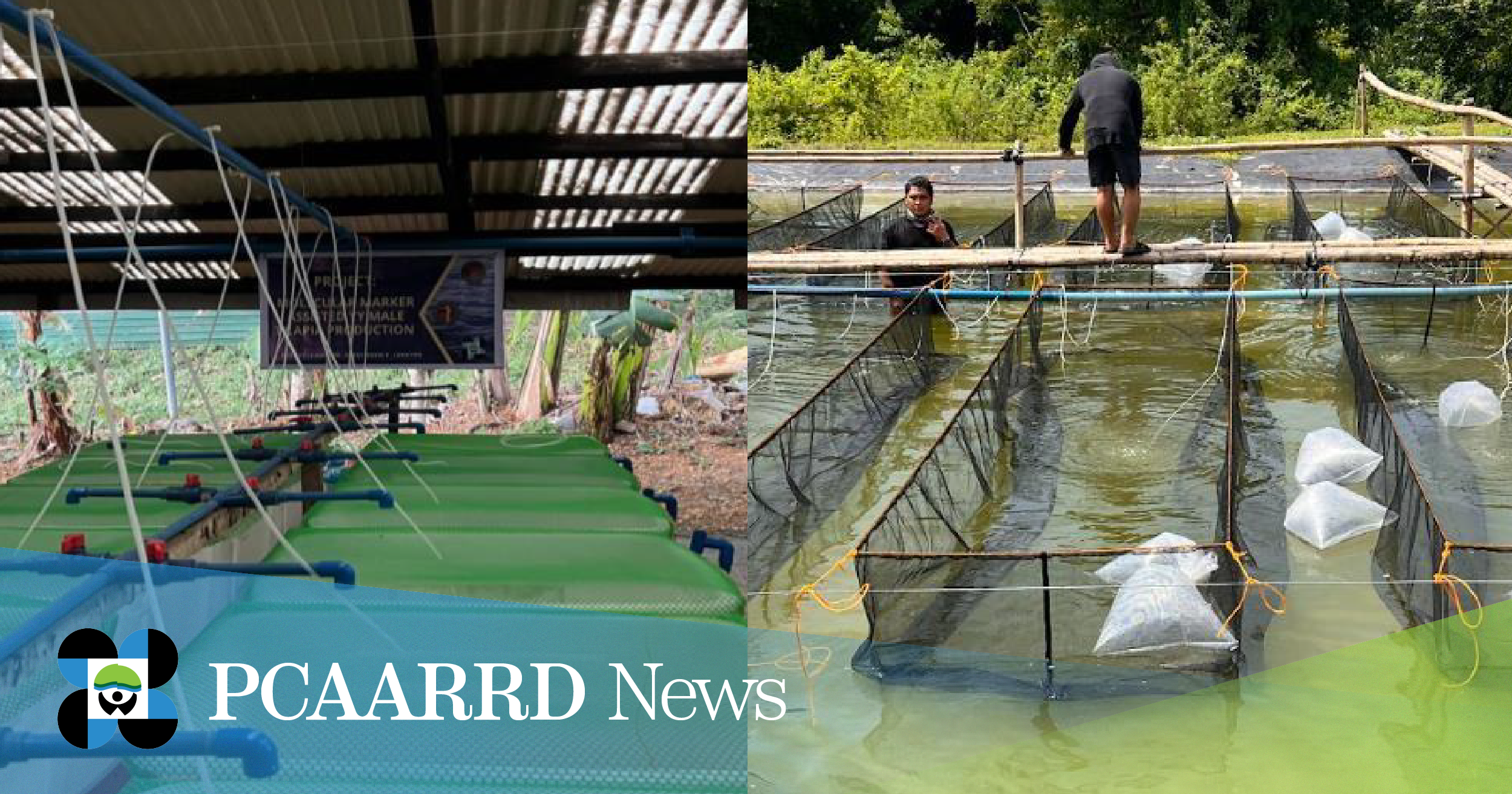In tilapia farming, male tilapia has always been more preferred as it grows to larger sizes than females. In female tilapia, the energy that is supposed to be used for somatic growth is instead utilized for producing eggs for reproductive purposes and behavioral interactions.
With this, an ongoing project from the University of the Philippines Visayas (UPV) is optimizing and developing an efficient protocol to develop male tilapias, or those that bear YY chromosomes, for the Philippines.
Currently, commercially available all-male tilapia fingerlings are produced through the use of steroid hormones. However, through this project, YY males (or super males) are being developed and will eventually be rolled out to tilapia farmers, allowing them to produce all-male (XY) tilapia progenies through natural breeding.

Feeding trial set-up for hormone infused feeds at UPV hatchery. (Image credit: UPV project team)
In genetics, pairing females (XX) with males (XY) produces a mix of XX and XY offspring. In this project, the XY males undergo a feminization process through oral hormonal ingestion to develop sex-reversed (SR) females with XY chromosomes. These SR females (XY) will then be used to mate with a natural male (XY) to produce male offspring with YY chromosomes. With the availability of sex-linked DNA markers, the generation/selection and identification of YY males could be done more efficiently.
The identified YY males will then be mated with SR XY females. Their offspring will undergo another sex-reversion through hormonal ingestion, this time, to generate a female tilapia with YY chromosomes. Once these SR YY female tilapias are identified, they will be mated with the YY male to generate all YY male offspring.
These YY male will be mass-produced to serve as broodfish and will be distributed to tilapia hatchery operators. YY male being parent stock are expected to mate with natural females (XX) to generate all-male (XY) tilapia offspring without the use of steroid hormones.
This is being done through the project, “Molecular Marker Assisted YY Male Tilapia Production,” which is being funded by the Philippine Council for Agriculture, Aquatic and Natural Resources Research and Development of the Department of Science and Technology (DOST-PCAARRD).
Generally, it aims to develop a YY male technology for the production of all-natural XY male tilapia offspring using the saline-tolerant strain, specifically the UPV-Saline-tolerant Population of Improved Nilotica (SPIN). This strain was developed through funding support from DOST-PCAARRD as well.

Transfer of female samples to the hapa net enclosures in freshwater aquaculture system. (Image credit: UPV project team)
In addition, it strives to significantly mitigate the effects of using steroid hormones. Through the use of YY males as parent stock, all-male tilapia production can be achieved through natural breeding without hormone ingestion. Through the project, hormone use is only limited during the initial development of sex-reversed broodstock.
According to the project, there needs to be more studies in developing YY male technology for saline-tolerant tilapia, especially in the Philippines. With this, the project aims to develop the said technology to boost a more efficient saline-tolerant tilapia aquaculture. By limiting saline-tolerant tilapia strains to all-male populations for grow-out culture, possible impacts on its proliferation and invasiveness in marine environments can be mitigated.
With its first year of implementation, the project is still in the process of feminization and grow-out stage. It is also assessing the presence of residual hormones in the culture facilities and developing strategies of managing wastewater from these. As a long-term goal, it aims to achieve increased national production of all-natural XY male tilapia through YY male technology.

